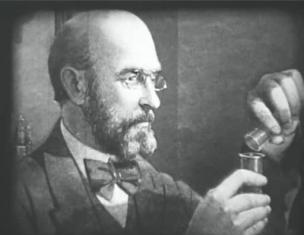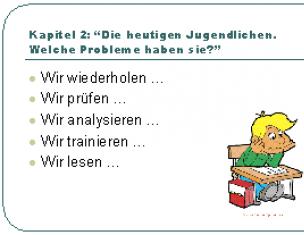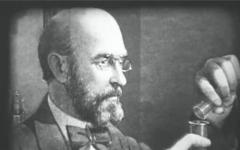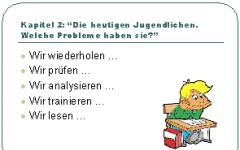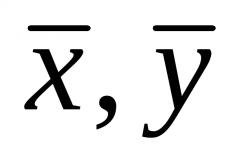Concept of political communication
The political sphere is the most important component of the structure of a modern state and society. At the same time, a key role in political processes is played by various forms of political communication, which, according to political scientists, fill all political processes with life, since they simultaneously connect the subjects of political interaction, political, legal and state institutions, ultimately ensuring the consistency of the sequence political events.
The origin of the term “political communication” occurred relatively recently - in the middle of the last century, due to the increased interest of researchers in conducting an in-depth analysis of the propaganda carried out during the Second World War. Gradually developing and becoming an independent branch of political science, the study of political communication led to the formation of various approaches to defining the concept of the category under consideration. Thus, representatives of the first point of view formulated the following definition of political communication:
Definition 1
Political communication is a continuous process of transferring political information between various elements of the political system, as well as between the political system and society.
Within the second approach, political communication is defined as follows:
Definition 2
Political communication is the entire range of informal communication processes occurring in society and having a diverse impact on the current state of politics.
Finally, the third approach has developed the following definition of political communication:
Definition 3
Political communication is a constant exchange of political meanings between members of society, on the one hand, and political forces, on the other, the ultimate goal of which is to achieve a certain agreement, consensus between them on socially significant and state-political issues.
Thus, despite the presence of different approaches to defining the concept of political communication, it is necessary to conclude that most researchers are unanimous in the understanding that political communication must be understood as the entire set of formal and informal communication processes occurring in society that have a diverse impact on the political sphere .
Elements of political communication
Carrying out further characterization of political communication, it is necessary to dwell in more detail on the consideration of those elements that constitute the main content of the analyzed category. It is customary, first of all, to identify political messages and information flows as relevant elements. In understanding political messages as information transmitted between political subjects in the process of struggle for power and its implementation, it is customary to distinguish three main types of corresponding messages:
- Incentive political messages containing demands or calls for taking certain actions or forming a specific model of behavior. As a rule, they are expressed in the form of a belief or an order;
- Informative political messages - that is, messages containing certain politically significant information (not always true);
- Factual policy messages aimed at establishing and maintaining the required degree of interaction between policy actors.
The next element of political communication - information flows, is also characterized by internal heterogeneity, and therefore, it is customary to distinguish three levels of corresponding flows:
- The first level is political and information flows necessary to serve the interests of public authorities and management. As a rule, information transmitted within this level is of an official nature and is not subject to wide publicity in this regard;
- The second level is an independent political and information environment associated with the activities of political parties, public associations and organizations, etc. The means of political communication at this level are, first of all, the proclamation of the programs of the relevant political subjects, as well as their assessment, discussion, etc. – as a result of which a special array of political information is formed;
- The third level is the most extensive element of political communication. This is due to the fact that it is where the formation and dissemination of politically significant information takes place, the source of which is public opinion, mass legal and political consciousness, political behavior of the masses, etc.
Note 1
As a result, having examined the elements of political communication and identifying their internal heterogeneity, one should pay attention to the fact that, despite a certain isolation of messages and information flows within political communication, they are all closely interconnected and interdependent, ultimately forming information space of the political sphere of public life.
Functions of political communication
Political communication, as a real and most important component of the political sphere of public life, performs a number of functions in relation to the political system and society as a whole, the key of which are:
- Information function, the content of which is that through political communication the necessary knowledge about the elements of the modern political system and its functioning is disseminated;
- A regulatory function, the result of which is the development of optimal mechanisms of interaction both within the political system and outside it - with civil society and individuals;
- The function of political socialization, expressed in the promotion of political communication to the processes of establishing and assimilating by society the most important and necessary political rules and norms;
- A manipulative function designed to influence the formation of public opinion on the most important political issues.
When talking about the political sphere of public life, we usually imagine a set of certain phenomena, objects and characters that are associated with the concept of “politics”. These are parties, the state, political norms, institutions (such as suffrage or the monarchy), symbols (flag, coat of arms, anthem), values of political culture, etc. All these structural elements of policy do not exist separately, independently of each other, but constitute system - a set, all parts of which are interconnected in such a way that a change in at least one part leads to changes in the entire system. The elements of the political system are ordered, interdependent and form a certain systemic integrity.
The political system can name an ordered set of norms, institutions, organizations, ideas, as well as relationships and interactions between them, during which political power is exercised.
A complex of state and non-state institutions that carry out political functions, that is, activities related to the functioning of state power.
The concept of a political system is more capacious than the concept of “public administration”, since it covers all individuals and all institutions participating in the political process, as well as informal and non-governmental factors and phenomena that influence the mechanism for identifying and posing problems, the development and implementation of solutions in the sphere state-power relations. In its broadest interpretation, the concept of “political system” includes everything that is related to politics.
The political system is characterized:
- , traditions and customs.
The political system carries out the following functions:
- conversion, that is, the transformation of public demands into political decisions;
- adaptation, that is, adaptation of the political system to the changing conditions of social life;
- mobilization of human and material resources (money, voters, etc.) to achieve political goals.
- protective function - protection of the socio-political system, its original basic values and principles;
- foreign policy - establishing and developing mutually beneficial relations with other states;
- consolidating - coordination of collective interests and demands of various social groups;
- distributive - creation and distribution of material and spiritual values;
Classification of political systems
There are various classifications of political systems.
Under political culture understand an integral part of the spiritual culture of humanity, which includes the totality of political knowledge, values and behavior patterns, as well as political language, symbols and traditions of statehood.
All elements of the political system, being in constant interaction, contribute to the performance of important social functions:
- identification of promising areas of social development;
- optimization of society's movement towards its goals;
- resource allocation;
- coordination of interests of various subjects; involving citizens in active participation in politics;
- development of norms and rules of conduct for members of society;
- control over the implementation of norms, laws and regulations;
- ensuring stability and security in society.
The political system includes the following institutions:
- and him;
- socio-political movements;
- pressure groups, or .
State
In relation to the political system, parties are divided into systemic and non-systemic. System form part of a given political system and act according to those rules, guided by its laws. A systemic party fights for power using legal methods, that is, accepted in a given system, in elections. Non-system parties do not recognize this political system and fight to change or eliminate it, usually by force. They are usually illegal or semi-legal.
The role of the party in the political system determined by its authority and the trust of voters. It is the parties that formulate the one that the state implements when a given party becomes ruling. In democratic systems, as a rule, there is a rotation of parties: from the ruling ones they move to the opposition ones, and from the opposition ones back to the ruling ones. Based on the number of parties, political systems are classified as follows: one-party - authoritarian or totalitarian: two-party; multi-party (the latter predominate). The Russian political system is multi-party.
Socio-political movements
Socio-political movements occupy an insignificant place in political systems. In their goals, movements are similar to political parties, but they do not have a charter or formal membership. In Russia socio-political movements are not allowed to participate in elections: they cannot nominate their candidates for parliament; an organization that sets itself political goals, but does not have 50 thousand members, is transferred to public organizations.
Pressure groups or interest groups
Pressure groups or interest groups - trade unions, industrialists' organizations, large monopolies(especially transnational ones), the church, the media and other institutions are organizations that do not have the goal of gaining power. Their goal is to put pressure on the government so that it satisfies their specific interest - for example, lowering taxes.
All of the listed structural elements, state and non-state institutions, act, as a rule, in accordance with certain political norms and traditions, which were developed as a result of extensive experience. , let's say, should be an election, not a parody. For example, it is normal for each ballot to have at least two candidates. Among the political traditions one can note the holding of rallies, demonstrations with political slogans, meetings of candidates and deputies with voters.
Means of political influence
State power is only the power of the state, but the power of the entire political system. Political power operates through a whole complex of institutions and appears to be quite impersonal.
Means of political influence- is a set of political institutions, relationships and ideas that personifies a certain. The mechanism of such influence is the system of government, or the system of political authorities.
The functions of the system of political authorities represent reactions to the influences of subjects entering this system: demands and support.
Requirements problems that government officials most often encounter are related to:
- with the distribution of benefits (for example, requirements regarding wages and working hours, improved transport);
- ensuring public safety;
- improving sanitary conditions, educational conditions, healthcare, etc.;
- processes in the field of communication and information (information about policy goals and decisions made by rulers, demonstration of available resources, etc.).
Support communities strengthen the positions of officials and the system of government itself. It is grouped in the following areas:
- material support (payment of taxes and other taxes, provision of services to the system, such as volunteer work or military service);
- compliance with laws and directives;
- participation in political life (voting, demonstrations and other forms);
- attention to official information, loyalty, respect for official symbols and ceremonies.
The reaction of the government system to the influence of various subjects is grouped into three main functions:
- rule-making (development of laws that actually determine the legal forms of behavior of individual groups and people in society);
- putting laws into effect;
- control over compliance with laws.
A more detailed list of the functions of the government system might look like this. The distribution function is expressed in the organization of the creation and distribution of material and spiritual values, honors, and status positions in accordance with the “table of ranks” in a given political system. The foreign policy function implies the establishment and development of mutually beneficial relations with foreign organizations. Program-strategic functions mean defining goals, objectives, ways of developing society, and developing specific programs for its activities. The mobilization function implies the attraction and organization of human, material and other resources to perform various social tasks. The function of political socialization is the ideological integration of social groups and individuals into the political community, the formation of collective political consciousness. The protective function is the protection of this form of political relations in the community, its original basic values and principles, ensuring external and internal security.
Thus, by responding to the influence of various political actors, the system of government brings about changes in the community and at the same time maintains stability in it. The ability to quickly and adequately respond to demands, achieve set goals, and maintain political relations within the framework of recognized norms ensures the effectiveness of the system of government.
What are the communicative components of a political system? and got the best answer
Answer from Ipso facto[guru]
Political communication according to D. Graeber is “composing, transmitting, receiving and processing messages that are likely to have a significant impact on the course of politics”].
There are two types of political communications: horizontal and vertical. The first is communications between relatively nearby institutional components or social actors (between different elite groups or ordinary citizens interacting in mass actions). The second involves the relationship between different hierarchical levels of the macropolitical structure: this occurs in the case of demands of various groups of the electorate on the government through declarations of political parties regarding the adjustment of the line of social policy. The function of political communication is performed by modern media of mass communication (MSC): press, radio, television, computer network and traditional channels for transmitting political and other social information: various kinds of personal contacts between people in primary social groups - family, work collective, related groups, church or rural communities, etc.
Reply from Yussky Knight[master]
Twitter for communication with Medvedev.
Political system (society, 10th grade)
1. Task 0 No. 272.
1) ideological principles
3) political norms
4) political organizations
2. Task 0 No. 827.
1) regulatory component
2) communicative component
3) cultural component
4) organizational component
3. Task 0 No. 938.
4. Task 0 No. 975.
1) normative component of the political system
2) communicative component of the political system
3) cultural component of the political system
4) organizational component of the political system
5. Task 0 No. 1197.
4) political ideologies
6. Task 0 No. 1345.
1) political institutions
2) political norms
3) political culture
4) political connections
7. Task 0 No. 1604.
8. Task 0 No. 3454.
9. Task 0 No. 3491.
2) legislation on elections of senior officials
4) interaction of civil organizations with state bodies
10. Task 0 No. 3567.
1) spiritual
2) communicative
3) normative
4) cultural
11. Task 0 No. 3641.
1) state
2) political party
3) trade union
4) constitution
12. Task 0 No. 4348.
13. Task 0 No. 4459.
1) state
2) political parties
4) political movements
14. Task 0 No. 4836.
3) federal laws
Political system
1. Task 0 No. 272. The communicative component of the political system includes
1) ideological principles
2) forms of interaction between parties
3) political norms
4) political organizations
Explanation.
2. Task 0 No. 827. Forms of interaction, connections, communication within the political system characterize it
1) regulatory component
2) communicative component
3) cultural component
4) organizational component
Explanation.
Communicative - a hint, this is precisely the interaction and connection of something.
The correct answer is listed at number 2.
3. Task 0 No. 938. The state, political parties, socio-political movements form
1) normative component of the political system
2) communicative component of the political system
3) cultural component of the political system
4) organizational component of the political system
Explanation.
All terms are components of the political system, institutions.
4. Task 0 No. 975. Political consciousness, political ideology form
1) normative component of the political system
2) communicative component of the political system
3) cultural component of the political system
4) organizational component of the political system
Explanation.
All this forms the political CULTURE of a citizen.
5. Task 0 No. 1197. What is an element of the cultural subsystem of a political system?
1) legal and political norms
2) established interactions of social groups
3) state, political parties
4) political ideologies
Explanation.
Political culture is a set of views, ideas, and ideas about the political system.
The correct answer is listed at number 4.
6. Task 0 No. 1345. Political ideology refers to
1) political institutions
2) political norms
3) political culture
4) political connections
Explanation.
Political ideology - 1) a system of ideas and views that expresses the fundamental interests, worldview, ideals of any political subject (class, nation, entire society, social movement, party); 2) a system of ideas and views, expressed primarily in a theoretical, more or less ordered form, that defend collective values and interests, formulate the goals of group activity and justify the ways and means of their implementation with 5) the help of political power or influence on it; 3) theoretical justification of the value system of certain political subjects.
The correct answer is listed at number 3.
7. Task 0 No. 1604. The communicative component of the political system includes
1) political parties and movements
2) relations between civil institutions and government bodies
3) political ideas and doctrines
4) ways of political participation of citizens
Explanation.
Political communication is the process of transmitting political information, through which it circulates from one part of the political system to another and between the political system and the social system. L. Pai also includes in political communication “the entire range of informal communication processes in society that have a wide variety of influences on politics.”
The correct answer is listed at number 2.
8. Task 0 No. 3454. The political system includes several subsystems. The communication subsystem includes(-are):
1) values and emotions that determine the political behavior of citizens
2) legislation on elections of senior officials
3) political parties and government bodies
4) interaction of civil organizations with state bodies
Explanation.
The political system is a multifunctional mechanism, including state and non-state social institutions that carry out political functions.
−institutional;
−normative;
−functional;
−communicative;
−cultural and ideological.
The communication subsystem is a set of connections and interactions between the subsystems of the political system, between the political system and other subsystems. In this case, it is the interaction of civil organizations with government agencies.
Values and emotions that determine the political behavior of citizens - cultural-ideological subsystem
The legislation on the election of senior officials is normative.
Political parties and government bodies - institutional.
The correct answer is indicated under number: 4.
9. Task 0 No. 3491. The political system includes several subsystems. The cultural subsystem includes (are):
1) behavioral standards characteristic of political activity
2) legislation on elections of senior officials
3) TV channels and other media
4) interaction of civil organizations with state bodies
Explanation.
The political system is a multifunctional mechanism, including state and non-state social institutions that carry out political functions.
Components (subsystems of the political system)
−institutional
−normative
−functional
−communicative
−cultural
Cultural covers political psychology, political ideology, political culture. Here these are behavioral standards characteristic of political activity.
Legislation on elections of senior officials is a normative subsystem.
Television channels and other media - institutional.
The interaction of civil organizations with authorities is communicative.
10. Task 0 No. 3567. Political parties have various connections and relationships with government agencies. The state finances parliamentary parties; the parties act as a constructive critic of government policies. This example characterizes such a component of the political system as
1) spiritual
2) communicative
3) normative
4) cultural
Explanation.
1. organizational (state, political parties, socio-political movements, pressure groups);
11. Task 0 No. 3641. The main institution of the political system is
1) state
2) political party
3) trade union
4) constitution
Explanation.
The main institution of the political system is the state.
The correct answer is indicated under the number: 1.
12. Task 0 No. 4348. The communicative component of the political system includes
1) value orientations and attitudes of people in the political field
2) connections between policy actors
3) programs of political parties
4) traditions and norms of political behavior
Explanation.
Subsystems (components) of the political system:
1. Institutional (state, political parties, socio-political movements, pressure groups)
2. normative (Political principles, traditions, charters of political associations)
3. cultural-ideological (political culture - knowledge, value orientations, political ideology, political psychology)
4. communicative (connections within the political system)
Value orientations and attitudes of people in the political field, traditions and norms of political behavior are a cultural and ideological component.
Programs of political parties are a normative component.
The correct answer is indicated under number: 2.
13. Task 0 No. 4459. Which institution of the political system has sovereignty?
1) state
2) political parties
3) media
4) political movements
Explanation.
The state has sovereignty. (supremacy of the state within the country and its independence in external relations).
The correct answer is indicated under the number: 1.
14. Task 0 No. 4836. Which of the following is an element of the institutional subsystem of the political system of society?
1) political parties and social movements
2) methods of exercising power
3) federal laws
4) dominant models of political behavior
Explanation.
Elements of the political system:
1. organizational or institutional (state, political parties, socio-political movements, pressure groups);
2. normative (norms, values, customs, traditions);
3. cultural (political culture - knowledge, value orientations, political psychology, methods of practical political activity + ideology);
4. communicative (connections within the political system).
The correct answer is indicated under the number: 1.
TO communicative component The political system of society includes relationships, connections, forms of interaction and communication that develop as part of political activity.
To realize their political goals, participants in political activity (institutions, organizations, large social communities, individuals) must build various relationships between themselves and the social environment. The connections, forms of interaction and communication that develop in this process represent the communicative subsystem of the political system of society. For example, this is the interaction of parliamentary committees; connections arising between parties and government bodies; relations between the executive, legislative and judicial branches of government; communication between the state and the population, etc.
Communication channels play an important role in the communication subsystem, through which information about the needs of the population is transmitted from the population to the state (these can be open hearings, commissions of inquiry, opinion polls, election results) and back - from the state to the population (the media play an important role here, inform the population about political decisions, adopted laws, etc.).
Norms of Political Interaction include political, legal and moral norms, as well as customs and traditions.
Cultural-ideological subsystem
In cultural-ideological component of the political system includes political ideas, views, perceptions, beliefs and feelings of participants in political activities. Conventionally, the cultural-ideological component can be divided into a political-psychological level, which concerns primarily the behavioral aspects of politics, and a political-ideological level, focused on political theory.
Political psychology focuses on the behavior of individuals, groups and entire societies, as well as their motivations, moods, opinions, feelings, emotions, beliefs, misconceptions, etc. Of particular importance here are the psychology of the crowd, the charisma of leaders, the manipulation of mass consciousness, etc.
Political ideology represents a higher level and includes political ideas, concepts, theories, teachings. The center of the political-ideological level is political culture.
Under political culture understand an integral part of the spiritual culture of humanity, which includes the totality of political knowledge, values and behavior patterns, as well as political language, symbols and traditions of statehood.
All elements of the political system, being in constant interaction, contribute to the performance of important social functions:
§ identification of promising areas of social development;
§ optimization of society’s movement towards its goals;
§ resource distribution;
§ coordination of interests of various subjects; involving citizens in active participation in politics;
§ development of norms and rules of conduct for members of society;
§ control over the implementation of norms, laws and regulations;
§ ensuring stability and security in society.
The political system includes the following institutions:
§ the state and its bodies;
§ political parties;
§ socio-political movements;
§ pressure groups or interest groups.
State
State - the main system-forming element, it unites all other elements of the political system into a single whole. The state is the most powerful subject of politics because it imposes power and the ability to coerce. At the same time, the state is also an object of political struggle, a “prize” for various political forces in the struggle for possession of the state machine. It's not always there functions in the political system as a single whole. In the course of political struggle, individual organs of the state can acquire independent significance (as a result of confrontation between political forces): for example, an army that carries out a coup d'etat. In the conflict between the President of Russia and the Supreme Council (parliament) in 1993, the president represented one political force, and the parliament - another. This situation cannot exist for long, since it destabilizes the political system.
The state and state power are the reward for the party that wins the elections. In such political systems there are developed parties and fairly effective control over power.
The relatively important role of the state and bureaucracy as independent entities in the exercise of power, along with parties, whose role is also quite significant.
Political parties
A party is an organization that unites citizens of the same political views to fight for power or to implement its own program.
The party is an ideological organization. The ideology (philosophy) of a party is a set of ideas that guide its activities.
According to ideological principles, parties are divided into:
§ conservative;
§ liberal;
§ democratic;
§ social democratic;
§ socialist;
§ communist;
§ nationalistic.
The party has a permanent organizational structure and leadership, and must have a charter and registered membership. According to Russian law, a party is an organization with at least 50 thousand members. The party has a program with specific proposals that it intends to implement when it comes to power, or implements as the ruling party.
Party goal- conquer and maintain state power. If an organization does not set such a goal, then it is not a political party. Political parties usually represent the interests of certain social groups.
In relation to the political system, parties are divided into systemic and non-systemic. System form part of a given political system and act according to those rules, guided by its laws. A systemic party fights for power using legal methods, that is, accepted in a given system, in elections. Non-system parties do not recognize this political system, they fight to change or eliminate it - usually by force. They are usually illegal or semi-legal.
The role of the party in the political system determined by its authority and the trust of voters. It is the parties that formulate the policies that the state implements when a given party becomes ruling. In democratic systems, as a rule, there is a rotation of parties: from the ruling ones they move to the opposition ones, and from the opposition ones - again to the ruling ones. Based on the number of parties, political systems are classified as follows: one-party - authoritarian or totalitarian: two-party; multi-party (the latter predominate). The Russian political system is multi-party.

